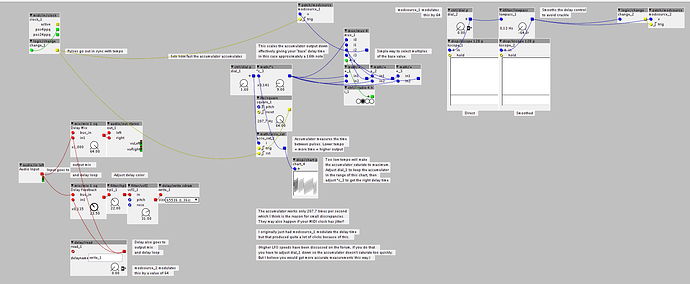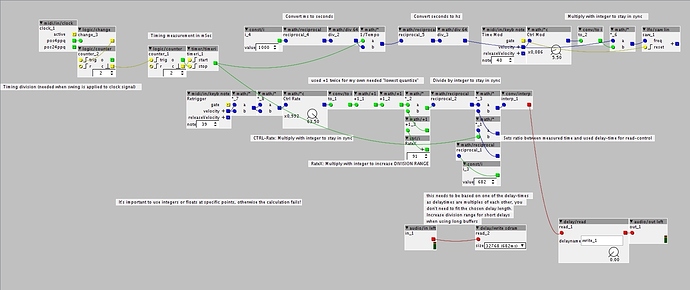I am not a programmer, so much of the more complicated stuff is lost on me in reference, but I am mathematically and logically capable of doing much of this... Just takes time!
I have not used tables, but looking into them will be on my list.
When changing delay time on many delay devices, pitch shifting is typical behavior... And sometimes really fun. I'm hoping to create a multi-delay where I can add multiple delays together, all set to different clock intervals, so a rapidly changing MIDI clock won't be a common occurrence. Counting the incoming MIDI clock and using math to convert that to a delay time setting could be a viable solution. Does anyone have thoughts on how that could be done? How is the best way to constantly analyze the rate of of the incoming MIDI clock and produce a number from that? If the clock changes, it could then react to that change and shift the math, so ideally it would look at the space between pulses and produce a number from that.
Thanks everyone for the help!




